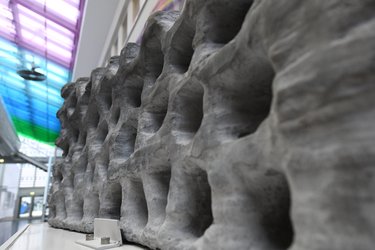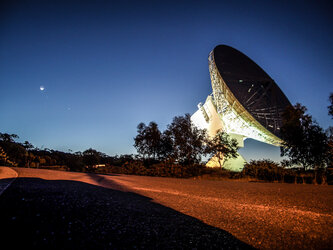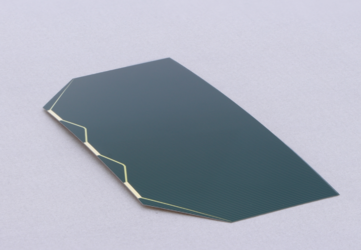Accept all cookies Accept only essential cookies See our Cookie Notice

About ESA
The European Space Agency (ESA) is Europe’s gateway to space. Its mission is to shape the development of Europe’s space capability and ensure that investment in space continues to deliver benefits to the citizens of Europe and the world.
Highlights
ESA - United space in Europe
This is ESA ESA facts Member States & Cooperating States Funding Director General Top management For Member State Delegations European vision European Space Policy ESA & EU Space Councils Responsibility & Sustainability Annual Report Calendar of meetings Corporate newsEstablishments & sites
ESA Headquarters ESA ESTEC ESA ESOC ESA ESRIN ESA EAC ESA ESAC Europe's Spaceport ESA ESEC ESA ECSAT Brussels Office Washington OfficeWorking with ESA
Business with ESA ESA Commercialisation Gateway Law at ESA Careers Cyber resilience at ESA IT at ESA Newsroom Partnerships Merchandising Licence Education Open Space Innovation Platform Integrity and Reporting Administrative Tribunal Health and SafetyMore about ESA
History ESA Historical Archives Exhibitions Publications Art & Culture ESA Merchandise Kids Diversity ESA Brand Centre ESA ChampionsLatest
Space in Member States
Find out more about space activities in our 23 Member States, and understand how ESA works together with their national agencies, institutions and organisations.
Science & Exploration
Exploring our Solar System and unlocking the secrets of the Universe
Go to topicAstronauts
Missions
Juice Euclid Webb Solar Orbiter BepiColombo Gaia ExoMars Cheops Exoplanet missions More missionsActivities
International Space Station Orion service module Gateway Concordia Caves & Pangaea BenefitsLatest
Space Safety
Protecting life and infrastructure on Earth and in orbit
Go to topicAsteroids
Asteroids and Planetary Defence Asteroid danger explained Flyeye telescope: asteroid detection Hera mission: asteroid deflection Near-Earth Object Coordination CentreSpace junk
About space debris Space debris by the numbers Space Environment Report In space refuelling, refurbishing and removingSafety from space
Clean Space ecodesign Zero Debris Technologies Space for Earth Supporting Sustainable DevelopmentLatest
Applications
Using space to benefit citizens and meet future challenges on Earth
Go to topicObserving the Earth
Observing the Earth Future EO Copernicus Meteorology Space for our climate Satellite missionsCommercialisation
ESA Commercialisation Gateway Open Space Innovation Platform Business Incubation ESA Space SolutionsLatest
Enabling & Support
Making space accessible and developing the technologies for the future
Go to topicBuilding missions
Space Engineering and Technology Test centre Laboratories Concurrent Design Facility Preparing for the future Shaping the Future Discovery and Preparation Advanced Concepts TeamSpace transportation
Space Transportation Ariane Vega Space Rider Future space transportation Boost! Europe's Spaceport Launches from Europe's Spaceport from 2012Latest

4: Mission design
Thank you for liking
You have already liked this page, you can only like it once!
Satellites designed to work in unknown hostile environments are the ultimate example of ‘form follows function’: no two missions are alike.
Any initial idea needs fleshing out through the setting of solid requirements: what are all the needs of the mission to best achieve its set goal? Where will it be going in space? What instrumentation payload will it require, how much onboard power is needed and how will its results be returned to Earth?
Experts must analyse every moment of a mission’s planned journey, from understanding its destination (A comet? An asteroid? A planet?) or fixed orbit (Low-Earth orbit? Geostationary orbit? Or out into deep space?) and selecting its launch vehicle and fixing its precise lift-off time to mapping out all its planned manoeuvres. This all provides vital data for the actual design of the spacecraft and also for the mission control systems and stations on the ground.
ESA’s BepiColombo mission, for instance, will perform nine planetary flybys to obtain vital gravity boosts before entering Mercury orbit – and each must be mapped out in 3D to just a few kilometres’ accuracy.
ESA’s Concurrent Design Facility, based at its technical centre in the Netherlands, gathers teams of experts to perform such ‘pre-Phase A’ studies of proposed missions, using networked systems to work together in real time, establishing a workable set of mission requirements which can then be passed to European industry through ‘invitations to tender’.
Mission development proceeds in terms of ‘Phase A’ – meaning initial industrial contracts, sometimes undertaken in parallel – to ‘Phase B’ when a single mission design reaches a preliminary buildable form.
In parallel, ESA specialists in space debris will assess the planned design, ensuring anything set to orbit Earth will be safely disposed of at the end of its mission, complying with debris guidelines and ensuring the continued safety of commercially and scientifically valuable orbits.
Other teams will ensure spacecraft can make use of specific frequencies for communications, a complex process involving direct liaison with the International Telecommunications Union to comply with international laws and standards and avoid interference with other satellites.
Next comes ‘Phase C’ when the spacecraft design is finalised, then ‘Phase D’ when it is actually built. ‘Phases E and F’ cover mission operations then finally disposal. ESA teams oversee progress through these phases, working with their industrial partners, with ESA technical experts embedded into each such team.
Next part: Inventing tomorrow
(Photo: A session at the CDF)
ESA Basic Activities at Space19+
For ESA’s next Ministerial Council, Space19+, set for the end of this year, the Agency is asking Europe’s space ministers for a substantial investment for its core Basic Activities, helping to support a new generation of space missions as efficiently as possible. ESA’s Basic Activities have three main objectives: to enable the future through early stage research and development, commencing the Agency’s seamless grid of innovation; develop and maintain ESA’s common infrastructure and expertise; and, develop, preserve and disseminate knowledge for European capacity building and sustainable growth – inspiring and promoting creativity.
-
CREDIT
ESA – A Le Floc'h -
LICENCE
ESA Standard Licence

3: First contact with new ideas

7: Ground tracking stations

5: Inventing tomorrow

Galileo deployment phase















 Germany
Germany
 Austria
Austria
 Belgium
Belgium
 Denmark
Denmark
 Spain
Spain
 Estonia
Estonia
 Finland
Finland
 France
France
 Greece
Greece
 Hungary
Hungary
 Ireland
Ireland
 Italy
Italy
 Luxembourg
Luxembourg
 Norway
Norway
 The Netherlands
The Netherlands
 Poland
Poland
 Portugal
Portugal
 Czechia
Czechia
 Romania
Romania
 United Kingdom
United Kingdom
 Slovenia
Slovenia
 Sweden
Sweden
 Switzerland
Switzerland
























